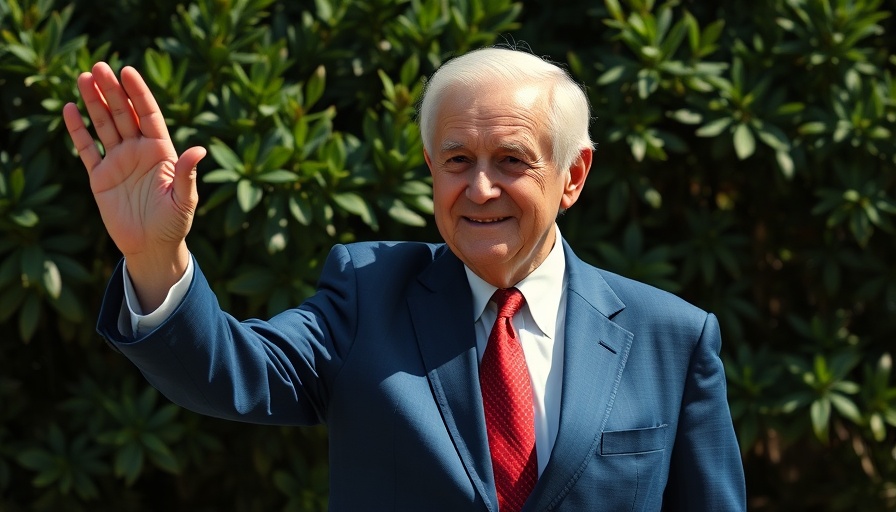
Trump’s Proposed 2026 Budget: A Threat to Public Health?
In a bold move that has sent ripples across the healthcare landscape, President Donald Trump unveiled a 2026 budget proposal that aims to significantly cut funding for vital health programs. With a steep 26% slash to the Department of Health and Human Services (HHS) discretionary budget, the new fiscal plan is positioned as a necessary effort to eradicate perceived waste and inefficiency, yet it may come at the cost of public health and biomedical research.
The Controversial Cuts: What's Being Affected?
The budget, characterized as a "wish list" by some, is filled with contentious proposals that could reshape how the Centers for Disease Control and Prevention (CDC) and the National Institutes of Health (NIH) operate. If enacted, the NIH—a leading global funder of biomedical and public health research—would see nearly $18 billion removed, impacting programs that many health advocates deem crucial. Similarly, the CDC would face a crippling $3.6 billion cut, leading to the elimination of various programs deemed "duplicative" or unnecessary. This includes vital public health initiatives related to environmental health, chronic disease prevention, and preparedness for health emergencies, which could hinder efforts to tackle future pandemics and health crises.
Examining the Rationale Behind Budget Cuts
Supporters of the spending cuts argue that they are essential to foster accountability within HHS and to push back against what they term “radical research.” They specifically criticize efforts toward gender-affirming care and environmental guidelines that challenge existing political sentiments. By restructuring NIH programs into five new categories, including controversial focuses on body systems and behavioral health, the administration aims to streamline operations, though critics argue that this could undermine comprehensive research into pressing health issues.
Implications of the Proposed Changes on Community Health
The budget proposal raises significant concerns from health professionals and community leaders about its potential implications on health and wellness at the grassroots level. Health advocates fear that cutting the National Institute on Minority Health and Health Disparities will exacerbate existing inequalities in underserved populations, directly impacting community health outcomes. Programs designed to improve access to healthcare services and address health disparities—essential components of promoting optimal health and wellness—face the brunt of funding reductions. This carries serious implications for future health initiatives in cities such as San Antonio, which rely heavily on federal funding for community health outreach.
Future Predictions: What Could This Budget Mean for Citizens?
The ramifications of the proposed budget cuts extend beyond immediate funding impacts. Experts predict that if Congress were to approve these cuts, vulnerable populations could face limited access to healthcare and diminished public health infrastructure, potentially resulting in more significant healthcare crises. Furthermore, continued underfunding of key health initiatives may stall progress in combating chronic diseases and inadequate healthcare delivery. As citizens are left with diminished health resources, conversations around alternative and complementary health approaches may gain traction, with communities seeking to fill gaps in healthcare services.
The Road Ahead: Community Initiative and Adoption of Alternative Medicine
While the proposed cuts are alarming, they have also sparked conversations about the importance of community health and wellness initiatives. In areas like San Antonio, where advocacy for health and wellness is crucial, there may be an increased focus on alternative medicine and natural therapies as means to support health. Emphasizing lifestyle medicine and holistic practices could lead communities to adopt a more engaged approach to their health and wellness. As residents look for solutions to enhance their overall well-being, educational events focusing on healthy living, nutritional supplements, and wellness can empower individuals to lead healthier lives despite the funding challenges posed by current political changes.
Conclusion: The Importance of Advocacy in Health Wellness
As we navigate the complexities of federal budget cuts and their impact on public health, the importance of community advocacy cannot be overstated. It is crucial for citizens to remain informed and active in conversations surrounding healthcare funding and to explore alternative health and wellness options. Engaging in community health events and advocating for access to comprehensive health services can create a collective push toward ensuring optimal health and wellness for all. As these discussions unfold, staying connected to the broader healthcare narrative is vital.
 Add Row
Add Row  Add
Add 




 Add Row
Add Row  Add
Add 


Write A Comment